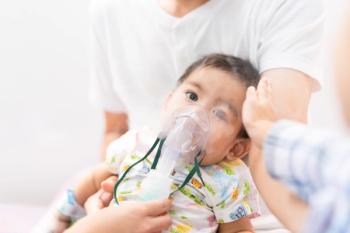
As the nation barrels into the 2006-2007 influenza season ...
Representatives of the American Academy of Pediatrics (AAP) and the Centers for Disease Control and Prevention (CDC), as well as other experts, have, throughout this autumn season, stressed the fact that CDC has recommended that all children from 6 months to 5 years old receive the flu vaccine. That expands the recommendation CDC first made for the 2004-2005 flu season-that children six months to two years get it.
At an October 4 press conference in Washington, DC, CDC Director Julie L. Gerberding, MD, MPH, said: "The reason for this is that the science indicates there is a benefit to them, particularly in hospital visits and illnesses and their complications."
CDC also recommends that children receive two doses of the influenza vaccine if they have never received it previously.
Noting that infants to 6 months are ineligible to be vaccinated, Dr. Jernigan said: "The way to protect them is to give vaccine to the family members, to the out-of-home caregivers, and to the siblings, to form a ring of protection around those very young children."
Dr. Jernigan also stressed that, despite the wide range of health-care settings, "If you provide health care, you are a health care worker, and you should be vaccinated."
A mediocre report card
To emphasize the need for this campaign, CDC released data indicating that the nation has not done well with recommended changes in the past. In 2002, CDC "encouraged" flu vaccination of children between 6 and 23 months old; for the 2004-2005 flu season, the agency made that a full-fledged "recommendation." But the National Immunization Survey found only one third of children in that age range received one or more influenza vaccinations from September through December that year. And the rate varied regionally, too: from 59% in Massachusetts to about 12% in Nevada.
Also at the press conference, Julia McMillan, MD, professor of pediatrics at the Johns Hopkins University School of Medicine (and editor in chief of Contemporary Pediatrics), decried the fact that the influenza vaccination rate among high-risk children has not improved. In fact, Dr. McMillan said, the rate "among children with underlying medical conditions, such as asthma, have the dubious distinction of being the lowest of any childhood vaccination."
That's the situation, Dr. McMillan noted, despite long-standing recommendations that children who have a chronic medical condition, such as asthma, heart disease, sickle-cell disease, and diabetes, receive the vaccine.
Dr. McMillan also noted that it is often difficult in children to distinguish flu symptoms from those of other illnesses.
"With recent advances in diagnosing the specific causes viral illnesses, however, the importance of influenza in causing infection in infants and children is now better understood."
CDC anticipates sufficient flu vaccine availability this year, with more than 100 million total doses, in both routes of administration, to be delivered to physicians' offices, community centers, clinics, and other health-care settings.
Details on the recommendations for influenza immunization are at
Newsletter
Access practical, evidence-based guidance to support better care for our youngest patients. Join our email list for the latest clinical updates.









